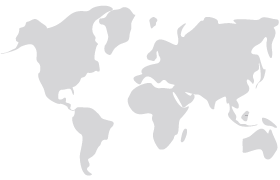
In this piece, we delve into the EPRG model, which offers four different routes to successfully managing international operations. EPRG stands for Ethnocentric, Polycentric, Regiocentric and Geocentric, and influences both business operations and HR strategy.
Ethnocentric:
The “hometown hero” mentality. The company believes its home country is the best at everything, so they impose their practices and products on foreign markets. It’s like saying, “Our way is the best way, no matter where we are!” In this case, HR will typically recruit in the home market for key positions in each country.

Polycentric:
This one’s all about giving autonomy to local branches, letting them adapt to local culture and preferences. If each branch routinely hits its targets, they’re given freedom to align with local customs and hire more local talent. It works for organisations who value the diversity of different markets, but it can lead to inconsistencies across countries.
Regiocentric:
Companies using this approach consider different regions as distinct markets, tailoring strategies to suit each. They encourage a balance of regional adaptation alongside standardised practices. Recruitment and people development is managed at a regional level, with regional heads reporting into the global team.
Geocentric:
The global citizen of the group. Companies with this mindset treat the whole world as their playground. They aim to blend the best of all worlds, taking the most effective strategies from each country and region and applying them globally. HR strategy seeks to incorporate talent from around the world to build a diverse workforce that represents people from across the company.
How do you know which direction to take?

If you’re undertaking a voyage to the unknown world of EPRG, you’ll need to plot a course before you get started. To do that, it’s important you understand where you are, where you’re currently headed and whether you’re moving in the right direction. Only then can you start moving towards your chosen destination.
Where are you now?
Step one in understanding the best approach is to understand where you are now. It’s important you consider this for both your Human Resource strategy and your business operations, then ask if they align with each other and with your wider company approach.
Are you going in the right direction?
Next, you should evaluate whether your approach delivers the best results for your organisation. Do certain regions outperform others and, if so, do they take a different approach? Does the same way of working deliver the same results in all markets?
Has the world moved on without you?
Are you missing a trick by persevering with a model that is no longer right for your organisation? Don’t forget, the world of international work has changed completely over the past decade. It might be that a solution that once worked is less effective in the current “new normal”.
Charting your International HR Strategy

Whichever direction you choose to take your strategy, there are some useful tools that will steer you in the right direction and make sure your international concerns aren’t cast adrift.
- Align with your organisation: Evaluate your organisation’s global strategy and adopt the EPRG orientation that best suits your goals. Ensure your HR strategies are coherent with your chosen approach.
- Leverage data and insights: Monitor and measure the impact of your international HR strategies. Use data to identify areas for improvement and refine your approach over time.
- Include learning and development: Embrace continuous learning as a cornerstone of your HR strategy. Whatever route you take, offer opportunities for employees to develop cross-cultural skills and gain global perspectives.
- Get the organisation on board: Any successful journey relies on the crew pulling together and steering in the same direction. By being clear and concise about your strategy, you’ll make sure everyone is working towards the same objectives.
- Prioritise cultural intelligence: Invest in training and development programmes that enhance cultural intelligence among your employees. Whichever route you opt for, cultural intelligence will allow you to understand whether your approach works in different parts of the world, and how you can adapt it to deliver the best solution for your organisation.
Once you have identified your chosen path, AGS is here to help you plot a course.
We have been helping multinational companies of all sizes navigate their global mobility programmes for more than 15 years. If you’re looking for advice on aligning your Global Mobility programme with your international Human Resource and talent objectives, contact us for an obligation-free chat.














